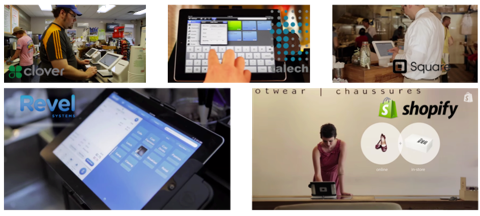Surprising disruptions and unanticipated consequences abound in payments.
Sometimes, it’s just a rule change that makes all the difference. In 2001, the NACHA rule enabling ad hoc web debits was put in place, primarily at the behest of banks who wanted to make it easier for their cardholders to pay their credit card bills. Great idea. But once in place, others saw its power, including PayPal who now uses that low cost avenue to fund a significant proportion of its customer transactions.
We’ve seen lots of technology upend entire industries. But in payments new technology usually affirms one set of incumbents while disrupting others. Take Square. At the outset, that combination of a smartphone with a simple magstripe dongle disrupted few. Indeed, Square’s innovation brought in a whole new base of merchants and a growing transaction volume that the payments industry had never seen before. It disrupted nothing except for cash and checks.
But since then—driven by the tablet and tablet-optimized software for the merchant—the incumbent terminal makers, electronic cash register manufacturers, and the sales channels who take these tools to market find themselves in competition with direct sellers like Square as well as a new crop of independent software vendors (ISVs) like Revel Systems, Shopify, Shopkeep, Vend, Breadcrumb, Toast, and dozens of others. The iPad and Android have forever changed what’s possible with an electronic cash register.
That change was in evidence at the Electronic Transaction Association’s TRANSACT conference earlier this month. You could hardly turn around without finding a booth selling EMV capable card readers or bumping into one of those ISVs looking to partner with an ISO to take its software to market.
Apple Pay is another technology that, while hugely improving the NFC experience, affirms the incumbent system’s economics and transaction flow. I doubt that, six months in, that Apple Pay has added much net new transaction volume. The still limited acceptance footprint is largely at fault. But that should change over the next couple of years thanks to Apple’s magisterial orchestration of the payments industry.
Apple Pay has excited financial institutions like no other recent event (how often do banks get to be the cool kids?) at the very same time as the US market is rushing to replace, almost wholesale, its entire point of sale infrastructure to support contact and contactless EMV.
The impact of these changes falls particularly heavily on the merchant services industry, the ISO, and the agents who, for decades, have been the feet-on-the-street for acquirers and processors. ISOs and agents find themselves selling against ISVs delivering more business value than card acceptance. The winners in the sea change are smaller merchants who find that they can get inventory, ecommerce, table management, and more for the cost of payment processing plus a small monthly fee.
Who’s doing what? How is this going to play out? What are the other moving pieces? Those are the questions we’re going to be answering in our upcoming Insight Workshop. Held May 21 in Menlo Park, the New Point of Sale is a deep dive into how payment initiation and acceptance are changing at the POS and what that means for the payments industry.
If you work in the acquiring space and need to get your arms around what’s happening or if you are a merchant trying to get a straight answer about your POS options, the New Point of Sale is for you.
This post was written by Glenbrook’s George Peabody.


